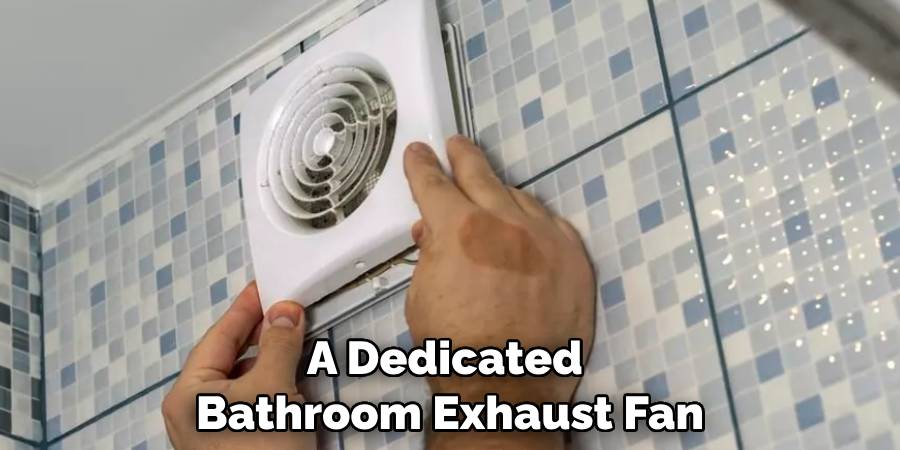When it comes to home renovations, one of the most common projects is updating a bathroom. And one of the key components of any bathroom is the bathtub. Whether you’re replacing an old tub or installing a new one, proper venting is crucial for keeping your bathroom clean and preventing damage from moisture. In this guide, we’ll walk you through how to vent a bathtub.

Why is Ventilation Important?
Before we dive into the steps of venting a bathtub, it’s important to understand why proper ventilation is important. Bathrooms are high-moisture areas and without proper ventilation, this moisture can lead to mold growth, mildew, and even wood rot. Not only can these issues be costly to fix, but they can also lead to health hazards for you and your family. Ventilation helps to remove excess moisture from the air, keeping your bathroom clean and preventing long-term damage.
What Tools Are Needed to Vent a Bathtub?
Before you begin venting your bathtub, make sure you have the necessary tools on hand. These include a drill, hole saw, pliers, pipe wrench, PVC piping and fittings, silicone sealant or plumber’s putty, and ventilation fan kit (if needed). It’s also important to have protective gear such as gloves and safety glasses.
10 Ways for How to Vent a Bathtub Effectively for a Relaxing Bathing Experience
A leisurely soak in the bathtub is an essential part of self-care for many people. At the end of a long day, unwinding in a tub full of warm, soothing water can be the perfect recipe for relaxation. However, a stuffy or poorly-ventilated bathroom can quickly turn that experience into a steamy, suffocating one. Here are ten efficient ways to ensure your bath area is properly vented, so you can refresh and rejuvenate without feeling like a lobster in a pot.
1. Install a Bathroom Exhaust Fan
A dedicated bathroom exhaust fan is arguably the most effective way to ventilate humid air promptly. When you turn it on, the exhaust fan removes moisture and odors from the air, helping to prevent mildew and keep your bathroom fresh. Opt for a high-quality exhaust fan with a sufficient CFM (cubic feet per minute) rating for your bathroom size, and make sure it vents outside, rather than into an attic or other enclosed space.

2. Keep the Bathroom Door Open
Something as simple as keeping the bathroom door open can create better air circulation. This allows steam to escape and drier air from adjacent rooms to flow in. If full privacy isn’t required, install a gap beneath the door or consider using a louvered door to help facilitate air movement while maintaining some sense of privacy.
3. Upgrade to a Larger Bathtub Vent
If you’re renovating or shopping for a new bathtub, consider one that comes with a larger or more efficient vent. Many new tub models come with improved ventilation features. Opting for tubs with overflow holes designed to promote better airflow can keep the environment pleasant and steam-free. Additionally, some modern tubs include integrated ventilation systems that assist in reducing humidity levels rapidly after use. This feature is particularly beneficial in bathrooms without windows or with limited natural ventilation.
4. Utilize a Window Fan
Installing a window fan can greatly improve air exchange in your bathroom. By positioning the fan to blow out, it can draw humid air from the bath, effectively venting the space. For an eco-friendly option, consider installing a solar-powered or energy-efficient fan. These fans minimize energy consumption while maintaining optimal exhaust performance, making it an environmentally conscious and cost-effective solution to bathroom ventilation issues.
5. Implement a Dehumidifier
A dehumidifier is a useful addition to bathrooms with chronic ventilation issues. It removes excess moisture from the air, helping to keep your bathroom environment dry and comfortable. Look for a unit with an adequate capacity for your bathroom size and consider a model with additional features like a built-in timer or hygrometer.

6. Use a Ventilated Bathtub Mat
An often-overlooked solution, a ventilated bathtub mat, allows air to circulate under your feet, preventing the accumulation of water and ultimately reducing the amount of steam in the air. This is a simple fix that can make a significant difference in maintaining a fresher and less humid bathroom environment. Moreover, ventilated bathtub mats are typically made of anti-microbial materials, helping to prevent mold and mildew growth, which are common concerns in humid conditions. By incorporating such practical yet effective fixtures, not only will you enhance your overall bathing experience, but you will also contribute to preserving the integrity of your bathroom’s structure and finishing.
7. Run the Shower on a Low Pressure and Temperature Before Leaving
After bathing, lower the pressure and temperature of your shower before you get out. This action helps to reduce the amount of steam generated, making it easier for any existing ventilation system to clear out the remaining moisture. Reducing the shower’s temperature gradually can also reduce condensation on mirrors and walls, preserving the structural integrity and cleanliness of your bathroom space.
8. Open Bathroom Windows and Doors
Natural ventilation can do wonders for airing out your bathroom. Opening windows and doors, especially during dry times of the day, encourages a breeze to move through the space, carrying steamed air with it. Be mindful, though, of outdoor humidity and allergen levels when choosing to ventilate this way. High levels of humidity outside can hamper the effectiveness of natural ventilation and may introduce additional moisture into the space. Furthermore, during high pollen seasons or in areas with poor air quality, keeping doors and windows closed with an air purifier running might be a better option to maintain a comfortable and healthy bathroom environment.
9. Regularly Clean Your Vents
Over time, dust and debris can accumulate in your ventilation grilles, obstructing the flow of air. Clean your bathroom vents and exhaust fan regularly to ensure they’re working at peak efficiency. To really tackle the issue, remove the grilles and clean inside the vent as well. Debris within the duct can reduce the effectiveness of your ventilation system, making it work harder and potentially leading to a shorter lifespan for your fan. Regular maintenance not only aids in air flow but also helps in preventing mold growth and the buildup of other harmful pollutants.

10. Opt for Quick-Dissolving Bath Products
Bath bombs and oils create a spa-like atmosphere, but they can also contribute to a steamy, humid bathroom. Instead, choose quick-dissolving bath salts or powders that release their benefits without lingering for extended periods. This change can reduce the amount of steam in the air post-bath, easing the load on your bathroom’s ventilation.
Enhancing the ventilation in your bathroom is not only about functional airflow; it’s about crafting a space conducive to relaxation and well-being. By incorporating several of these methods, you can enjoy a tranquil bath without ever feeling like the room’s walls are closing in on you.
Frequently Asked Questions
How Far Can a Vent Pipe Be From a Bathtub?
Ventilation is paramount in preserving the integrity of your plumbing system, and the placement of a vent pipe in relation to your bathtub can significantly influence its efficiency. When considering how to vent a bathtub properly, one must adhere to building codes which dictate the maximum distance a vent pipe can be installed from the fixture to ensure optimal airflow and prevent a slow-draining, gurgling tub that could disrupt your tranquil bath time.
Navigating these regulations calls for a fine balance between technical compliance and practical application within your bathroom’s layout, ensuring a silent guardian for your pipes lies hidden yet highly effective, maintaining the serene sanctuary of your bathing experience.
Does a Bathtub Need to Be Vented?
Yes, a bathtub does need to be vented. Proper ventilation is essential for any plumbing fixture in order to prevent clogs, slow draining, and unpleasant odors. Without proper ventilation, the pressure in the pipes can become imbalanced, causing water to drain more slowly or even backup into the tub. This can also lead to bacteria growth and an unpleasant smell in your bathroom. Additionally, venting a bathtub can help to reduce moisture in the room, preventing mold and mildew growth and maintaining a healthy environment.

What Happens if a Tub is Not Vented?
A tub that is not properly vented can lead to issues such as mold and mildew growth, peeling paint or wallpaper, and musty odors. In some cases, it can also cause structural damage to your bathroom over time. Proper ventilation is essential for maintaining a healthy and functional bathroom environment.
Conclusion
In this section, we discussed the importance of properly venting a bathtub, the potential consequences of inadequate ventilation, and how to determine the appropriate placement of a vent pipe. It is essential to prioritize proper ventilation in your bathroom to maintain both functionality and comfort. Consult with a professional if you are unsure about the best way for how to vent a bathtub, as it can have long-term impacts on the health and safety of your home.
With the proper ventilation, you can enjoy a worry-free and relaxing bath experience for years to come. Remember, a well-ventilated bathroom is not only beneficial for your physical health but also for the overall aesthetics and longevity of your home. So make sure to keep those vent pipes in check! Remember, always prioritize the well-being of yourself and your home. Happy bathing!
